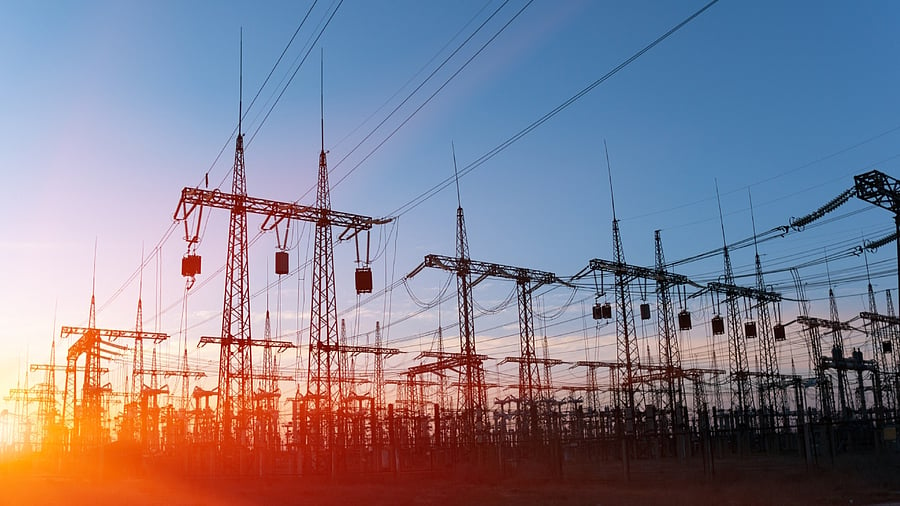
There was a time in this country when power cuts were a part of life even if one was privileged to live in the national capital. In the Seventies and Eighties, the only metropolis with the luxury of uninterrupted power supply was Mumbai, thanks to the efficiency of the Tata Power Company. Rural areas were much worse off than urban centres with just a few hours of electricity supply every day.
Several decades later, the scenario has changed beyond recognition. Small local faults are generally the only glitches creating prolonged power cuts in the national capital region and most other urban centres. Rural areas, however, are still waiting for 24X7 power supply.
The power sector is not yet out of the woods in terms of providing adequate uninterrupted supply to industrial and individual consumers but tremendous progress has been made. It also needs to be mentioned that power is the single-most important element of infrastructure for any developed or developing economy. The absence of assured power availability in many states has, in the past, been a key factor inhibiting foreign investors from coming to India.
One of the major lacunae in the power sector has been the huge losses accumulated by state power distribution companies (discoms). This has been largely due to political parties providing free or subsidised power to critical sectors like agriculture. Over the years, the discoms became saddled with heavy debt burdens while generating companies suffered equally. Another reason for inefficiencies in the supply network has been the unusually high technical and commercial losses on power distribution. India has had the dubious distinction of having one of the highest levels of line losses in the entire world, partly due to faulty infrastructure and partly to large scale power theft.
Latest reports suggest these critical issues are on the way to being resolved, and the sector is being brought to a state of financial health after many decades. This is being done in the case of debt-heavy discoms by imposing financial discipline that has clearly been backed by political will. The discoms who had earlier been allowed to access power supplies from generating companies despite the debt overhang, are now not being allowed to draw power unless current dues are up to date.
Late Payment Surcharge Rules have been issued providing that access to their power exchange will be blocked unless prompt payment is made for power drawn from the inter-state transmission system. This tough approach has ensured that current dues are paid though legacy debt of discoms remains substantial. Even this has been brought down from Rs 1,38,378 crore last year to Rs 91,061 crore by March 2023, according to a written reply in the Lok Sabha by Power Minister R K Singh. He has been exuding confidence in recent interviews that the remainder would also be wiped out within a year or so.
The other issue of technical and commercial losses that has plagued the power sector for decades has also been taken in hand. The line losses which were of the order of 22.3 per cent in 2020-21 are now expected to reach 13.5 per cent in 2022-23, according to the power ministry. This is an enormous improvement in efficiency levels for the entire power distribution network. Many reasons are given for this feat including revised prudential norms for lending, a revamped distribution sector scheme and mandatory energy accounting and auditing.
While these developments are all to the good, power supply was overturned last year when extreme heat levels led to outages in many parts of India. Demand rose to over 211 gigawatts in June 2022 while coal stocks at thermal power plants were not adequate to meet demand leading to power outages in many states. The situation was compounded by high prices of imported coal though plants based on this resource were directed to revive generation to meet the higher demand. In other words, electricity supply can still be disrupted in times of unusually high demand due to logistical reasons like in 2022 when there were co-ordination issues between the coal producers and the railways.
The situation is vastly different now with coal stocks estimated to be 44 per cent higher than June 2022, according to coal ministry estimates. But this has also been a cooler summer, especially in the northern region.
Overall, the power sector is on the path to better financial health, efficiency, and productivity. Political will has clearly been a factor in taking a tough stance on states trying to access power without making payment. At the same time, fiscal health has not yet translated into uninterrupted power supply in times of peak demand as was witnessed last year. So, the all-important power sector remains a work in progress though much spadework on complex entrenched matters has finally been carried out.
(Sushma Ramachandran is a senior journalist.)
Disclaimer: The views expressed above are the author's own. They do not necessarily reflect the views of DH